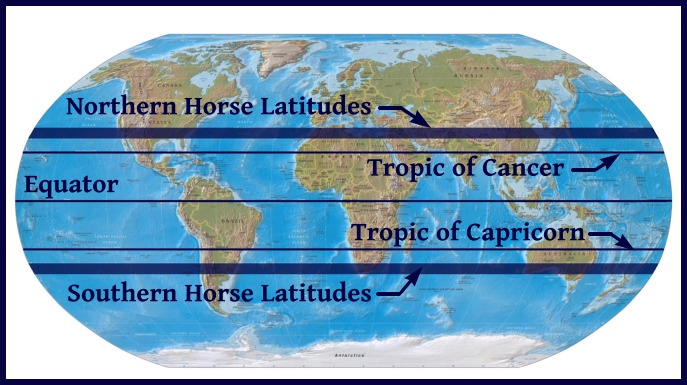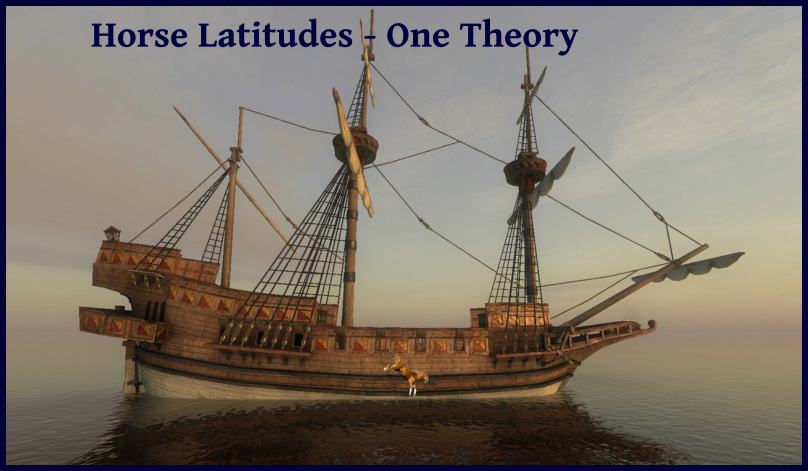The Blue View - Horse Latitudes
/For some odd reason, I always thought the horse latitudes were synonymous with the doldrums near the Equator, but they're not. There are two high pressure bands that lie between 30 and 35 degrees from the equator in both the Northern and Southern hemispheres, which for centuries have been referred to by sailors as the horse latitudes. Both areas experience little or no precipitation, and variable light winds. Sailing vessels were often becalmed in these regions – thus in the north, the area was known as the Calms of Cancer and in the Southern Hemisphere it was known as the Calms of Capricorn.

The earth also has three bands of low pressure – one near each of the poles and one lying at or near the equator. Since wind flows from a high pressure area to a low pressure area, the areas between the horse latitudes and the equator have much more consistent winds – the trade winds. Likewise, between the horse latitudes and the polar lows, the winds produce the westerlies. Mariners of long ago may not have known what caused the trades and the westerlies, but did know how to take advantage of them. They also knew that they were likely to be becalmed in the horse latitudes, and tried to spend as little time as possible in them.
As an interesting aside, the consistently warm, dry air of these regions are partially responsible for the formation of most of the earth's subtropical deserts; the Sahara, the deserts of the southwestern United States, northern Mexico, and the Middle East in the Northern Hemisphere, and the Kalahari, the Namib, the Australian, and the Atacama deserts in the Southern Hemisphere.
There are several theories about how the horse latitudes got their name. The most prevalent legend is that the Spanish ships often transported horses to their colonies in South America. If they were becalmed for a long period of time in these high pressure areas, fresh water would start running low, and there wasn't enough to spare for the horses. The dead or dying animals would be thrown overboard. I suspect that if the legend is true at all, the horses would have been eaten rather than thrown overboard. Maybe it was named the horse latitudes because it was where the crew got to feast on horse meat instead of the usual limited rations of salted beef.
Another theory is that the name came from the “dead horse” ritual of sailors. Seamen, when signing on for a voyage, would receive an advance in pay, which was meant to be spent on gear and clothing for the voyage (but more likely was spent on drink and debauchery in the hours before departure). It was usually a month or two into the voyage before the debt was worked off, and this period was called the “dead horse” time. A celebration was often held when the debt was paid off, and it usually corresponded to about the time the ship reached the area of calms.
A third explanation comes from old maritime terminology. A ship is being horsed when it is being carried by a strong current. In an area of light or calm winds, the sea currents and tides would have more effect on the progress of the vessel than the wind. Its forward progress through the horse latitudes would depend on how much it was being horsed.
Whatever the explanation, the horse latitudes in the South Atlantic near Africa are quite narrow and fortunately, our passage is reasonably fast. Whew … that's a relief because we weren't looking forward to eating or throwing any of our horses overboard.
And lest you think we've forgotten, Happy 239th Birthday, America. Though we won't be celebrating with fireworks and family barbeques, we've got the 4th of July spirit aboard Nine of Cups and our American flag is flying.




